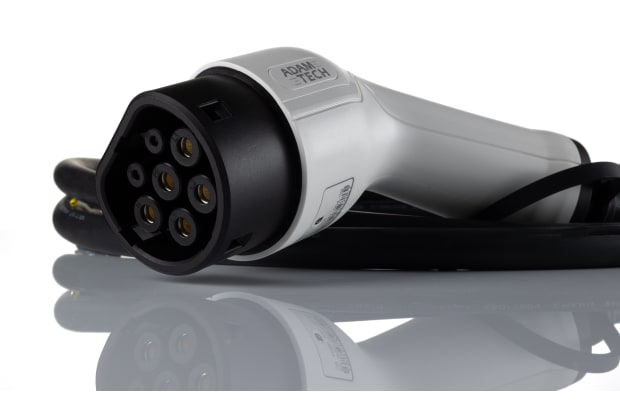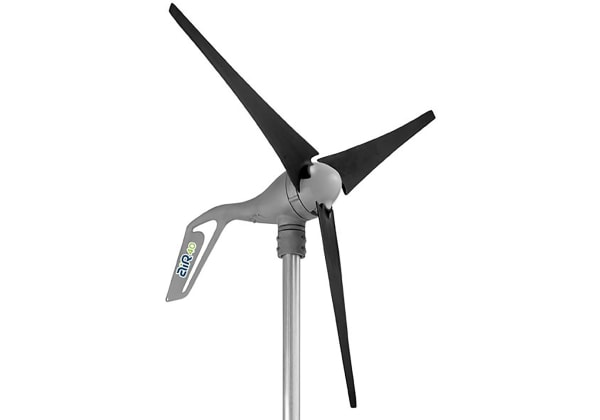- Published 2 May 2023
- Last Modified 29 Aug 2023
- 9 min
Guide to EV Charging
Discover what EV charging is, how it works, and how businesses can benefit from installing it.

Electric vehicle charging stations are increasingly becoming a feature in homes, public places, and businesses. As EVs become more popular amongst drivers and the UK government bans sales of <u>new petrol and diesel cars from 2030</u>, the number of stations, connectors and chargers is only going to grow.
For businesses thinking about putting a charging station in place for their colleagues and customers, understanding exactly how EV chargers work, what the different options are and what they cost to install is key.
This guide will act as an ultimate guide to EV charging for businesses looking to prepare for a sustainable future.
What is EV Charging?
EV charging, or electric vehicle charging, is the process of recharging the battery in vehicles powered by electrical energy. In most cases, this involves plugging the connection point in a car, van, or another battery-powered vehicle to an EV charging point via a specially designed cable.
Once plugged in, the EV battery will take the electrical energy from the charging point and store it ready to power the vehicle. Just like any other electrical device, the right connecting cable and voltage level needs to be used to charge each EV correctly and efficiently.
EV Charging Points
EV charging points are a fundamental part of the electric vehicle charging infrastructure. Also known as EV charging stations, there are many types of points available for installation in business car parks or sites. To make sure you get the right one, you need to consider the level of voltage it produces, the type of power it supplies and the connectors it uses, alongside the EV charging point installation cost.

What is an EV Charging Point?
An EV charging point or station is a static unit EV owners can use to recharge their vehicle’s batteries with electrical energy. They’re available to install in homes, public places, and businesses.
Depending on how they’ll be used, each EV charging point will have different numbers of connectors and offer different levels of power supply. Typically, an EV charging point will be categorised as a slow, fast, or rapid charger.
How Fast are EV Charging Stations?
How fast EV charging stations are to fill up an electric vehicle’s battery depends on the power source they’re wired into and the voltage level they can supply via their connector cables. The actual time it takes to charge an EV also depends on the size and condition of a battery and how full it already is, alongside the power supply of the charging station.
Each EV charging station will fall under one of the following categories:
- Slow chargers supply up to 3kW of power and will fill up an EV from empty in around 8 to 10 hours
- Fast stations are available with 7kW or 22kW of power and will take between 3 and 4 hours to fully charge a vehicle
- Rapid units provide voltages upwards of 43kW and will fully charge an EV in 30 to 60 minutes
Fast or rapid charging stations tend to be the best options for businesses, as they have multiple sockets and can charge an EV in the space of typical office hours. It’s important to keep in mind that, as well as providing different levels of power supply, each station will also be compatible with particular types of EV connectors.
Types of EV Connectors
<u>EV connectors</u> are the ends of the cable that links the charging station to the EV’s battery. Like a standard power plug, the connectors that link to the EV have pins, while those linking to the charge point have sockets. It’s important to get the right type of connecting cable for both the EV and the EV charging station for effective and safe charging to take place.
Type 1 and Type 2 connectors are widely used in electric vehicles and supply alternating current (AC) power from the charging point to the EV. Another common type of connector is the CCS2 connector. It can supply both AC and DC power from the charging point to the EV.
Type 1
Type 1 connectors have 5 pins and a latch that keeps them in place in the EV and the charging point to prevent any loss of power. Able to supply power of up to 7kW, Type 1 connectors can link compatible vehicles up to slow and fast charging points.
Also known as an SAE J1772 or J plug. Type 1 connectors are the standard connector used in North America, Canada, and Japan. It features 5 pins and supports single-phase AC charging. Type 1 connectors can deliver a power output of up to 7.4kW and can link compatible EVs to slow and fast charging points.
Type 2
Type 2 connectors have 7 pins in 3 rows and a locking pin that keeps the connector in place in the EV or charging point. The extra number of plugs and sockets means more power can be supplied. As such, they’re suitable for connecting compatible EVs to fast and rapid charging points which provide between 22kW and 43kW of power.
Also known as a Mennekes connector, Type 2 connectors are the standard connector used primarily in the UK and Europe. It features 7 pins and supports both single-phase and three-phase charging. Type 2 connectors can deliver up to 22kW for private charging and up to 43kW for public charging. They are suitable for connecting compatible EVs to fast and rapid charging points.
CCS2 (Combined Charging System)
CCS2 also known as Combo is a rapid charging connector in Europe. The CCS2 is a combined charging standard supporting both AC and DC charging between 50kW and 350kW of power. CCS2 plugs are an enhanced version of the standard Type 2 connector with an additional two power contacts which allows for DC rapid charging. They are suitable for connecting compatible EVs to rapid charging points.
How to Use EV Charging Stations
To use an EV charging station, vehicle owners need to first find a point which has compatible connectors (either Type 1, Type 2, or a DC option).
Then, they typically need to follow these steps:
- Park next to the compatible charging station
- Get their charging cable. This is supplied with the EV and is usually kept in the boot or another internal storage area
- Open their charging port and plug in the cable connector
- Plug the other end of the cable into the charging station
- Pay to use the charging station via an app or a pre-loaded card
- Once the payment is completed, the charging should start. Owners can then lock their vehicle and leave it while they wait for the charging to be completed
- Once the battery has been charged to the desired level, owners can then disconnect the connectors, close their charging port, and continue their journey
How Many EV Charging Stations are in the UK?
According to Zap Map, there were nearly <u>39,000 charging points</u> in the UK at the end of January 2023. To help EV owners avoid so-called ‘range anxiety’ and make sure they can complete their journeys easily, the government is encouraging homes, public places, and businesses to install EV charging points.
How Much Does an EV Charging Station Cost?
The final EV charging point cost will depend on the type of charger chosen. Typically, this cost will include both the initial price for installation and the ongoing electricity bills from the power supply.
However, UK-based businesses can apply for an <u>EV charge point grant</u> from the government, which will cover up to 75% of the installation costs. Plus, some businesses may choose to charge their customers or employees a small amount per minute of usage to help cover the operating costs.
How to Install an EV Charging Point
Whether you’re looking at electric vehicle home charging installation or considering putting a charging station on your business’s car park or site, it’s best to work with a specialised provider to put an EV charging point in place.
As experts in this area, they’ll be able to understand your needs and recommend the best charging station options, as well as provide costs. So, whether you want to have EV charging for your office, your customers or your new electric fleet, specialist providers will be able to help you find the best option for the right price.
EV Charging Cables
There is no one EV charging cable to suit all vehicles and charging points. So how do you know which one to choose for your requirements?

EV Charging Cables Explained
Getting the right EV charging cable is essential to ensuring a vehicle connects safely to a charging station and supplies power to the vehicle effectively. As well as having different connectors, each cable type enables different applications and levels of power supply.
Each EV usually comes with its own cable. However, owners and businesses might want to invest in different types of cables to give greater flexibility or offer an increased power supply.
Types of EV Charging Cables
EV charging cables are classified under one of four different categories:
- Mode 1 is a simple and easy-to-use cable that charges a vehicle via a standard 3-pin socket. Though this is a straightforward charging cable, the power supply is slow and typically won’t have any extra safety protocols in place
- Mode 2 cables also charge EVs by connecting them directly to a standard socket. However, they have the extra benefit of an In-Cable Control and Protection Device which stops overcharging of the EV and prevents power surges. Again though, this charging method is slow
- Mode 3 cables are the standard connection found in fixed public or commercial charging points. They will have tight control over the level of power sent to the EV and will have a permanent socket or connection to the charging station
- Mode 4 cables are attached to fast or rapid charging points that work through DC charging. Within the station, AC power is turned into a DC current that’s then sent down the Mode 4 cable. To keep users safe from high levels of power, these cables are tethered and cooled
Although most EVs will be supplied with the most appropriate cable, it might be worth businesses having a selection of them available to visitors or employees. That way, you’ll help them get back home safely and provide real support to your electric vehicle-driving colleagues and customers.
Further Reading
Related links
- EV Charging Points
- Schneider Electric EV Charging Point
- BG Electrical Single Phase 7.4kW EV Charging Point, 32A O/P
- Schneider Electric 7.4kW EV Charging Point, 32A O/P
- Schneider Electric 22kW EV Charging Point, 32A O/P
- Type 2 EV Charger Test Adapter
- Phoenix Contact 3 Phase 30kW EV Charging Point 100A O/P
- charging station AC SMART ADVANCED-7,4/2



